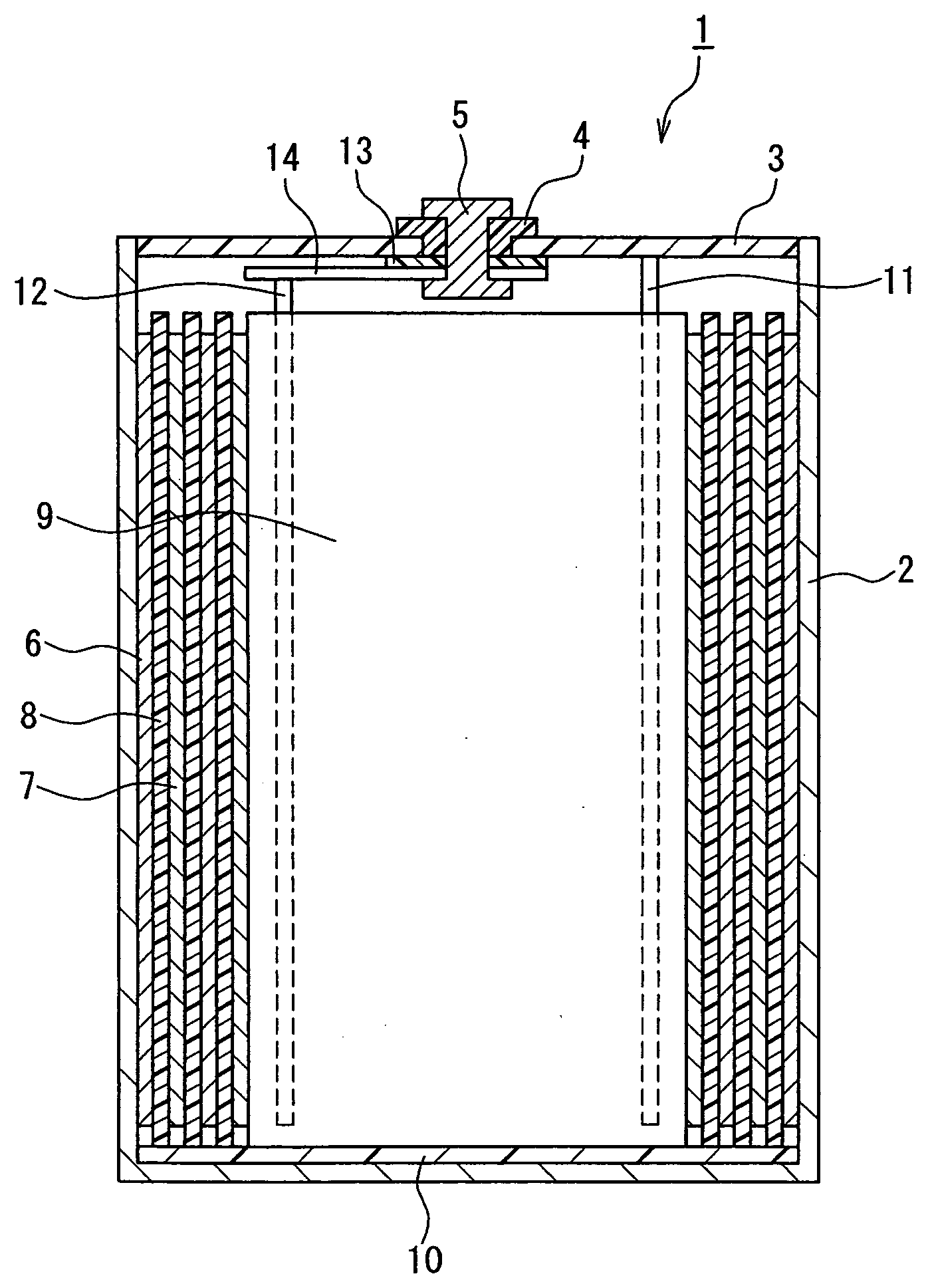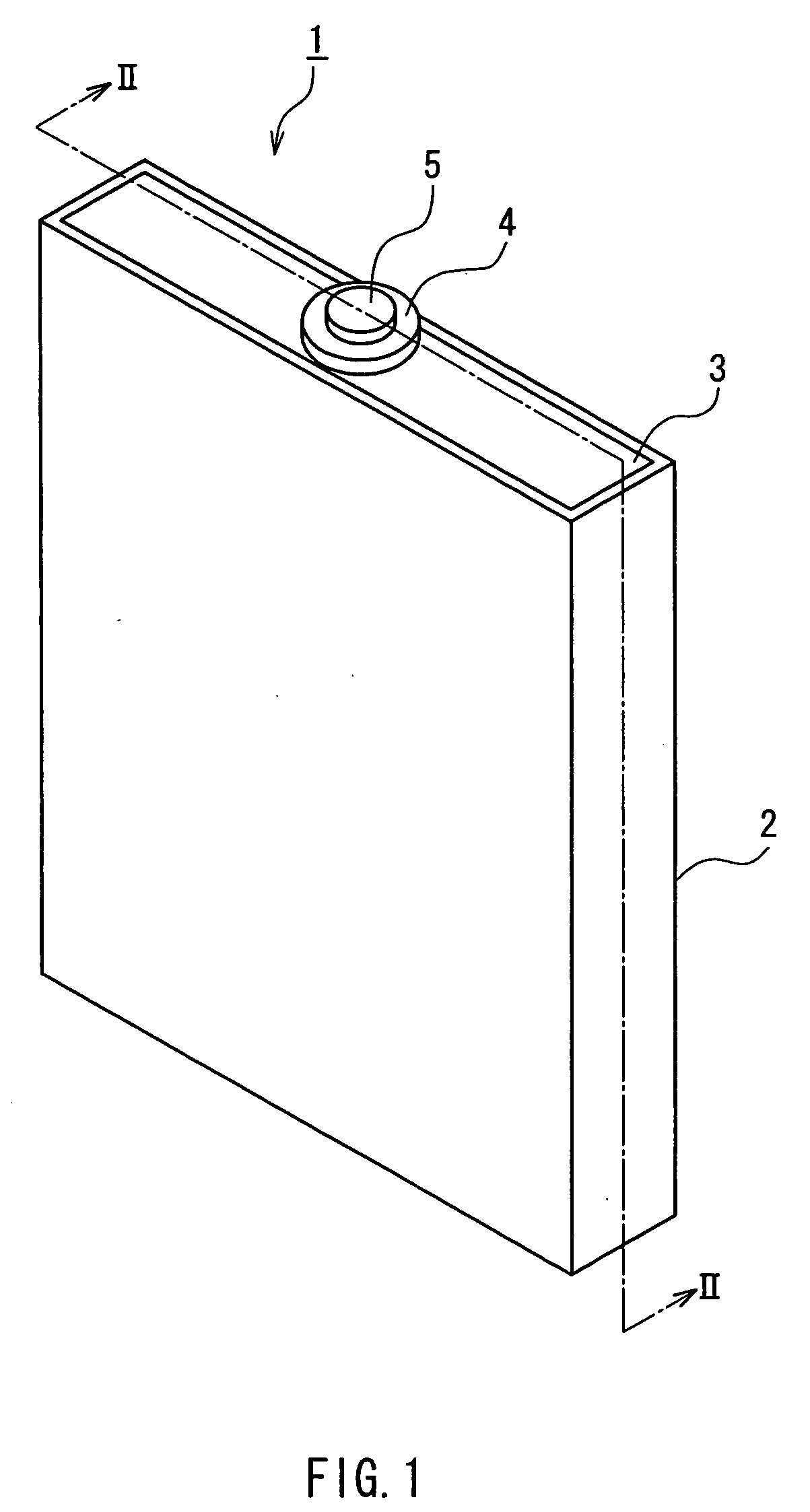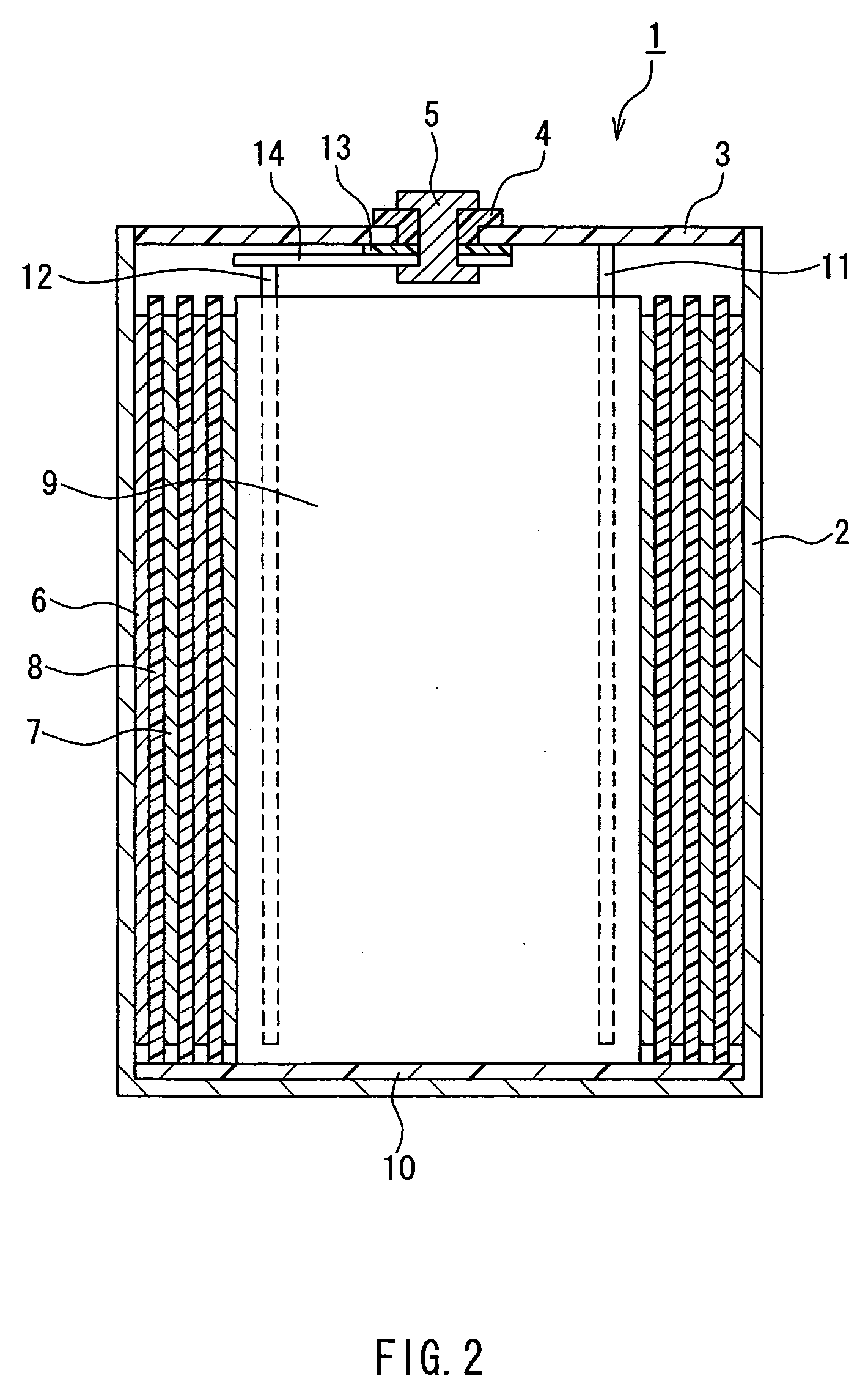Non-aqueous secondary battery
a secondary battery, non-aqueous technology, applied in the field of secondary batteries, can solve the problems of lowering the safety and the charging/discharging cycle properties of batteries, and not being able to apply these technologies
- Summary
- Abstract
- Description
- Claims
- Application Information
AI Technical Summary
Benefits of technology
Problems solved by technology
Method used
Image
Examples
example 1
[0074] As explained below, electrodes and a non-aqueous electrolytic solution were prepared, and a non-aqueous secondary battery having the same structure as shown in FIG. 1 and FIG. 2 were produced.
[0075] The positive electrode was produced according to the following manner. First, 3 mass parts of carbon black as a conductive material were added to 94 mass parts of Li1.02Ni1 / 3Mn1 / 3Co1 / 3O2 (positive electrode active material), which is layered structure lithium manganese composite oxide and mixed to obtain a mixture. A solution obtained by dissolving 3 mass parts of polyvinylidene-fluoride in NMP is added to the thus obtained mixture and mixed to obtain a slurry of the composition containing a positive electrode active material. The slurry is subjected to sieve using net having 70 mesh to remove large particles. The slurry of the composition containing a positive electrode active material was coated evenly on the surfaces of positive electrode collector of aluminum foil having 15 μ...
examples 2-6
[0081] The manner described in Example 1 was repeated to obtain a battery, excepting that, instead of employing 1,2-propanediol sulfuric ester, ethylene glycol sulfuric ester (Example 2), 1,3-propanediol sulfuric ester (Example 3), 1,3-propane sultone (Example 4), 1,2-propane sultone (example 5) and 1,4-butane sultone (Example 6) were employed to prepare a non-aqueous electrolytic solution, respectively, so that each concentration of each additive is 2.0 mass % based on total mass of a non-aqueous electrolytic solution, and that thus obtained non-aqueous electrolytic solution is employed.
examples 7-13
[0082] A manner described in Example 1 was repeated to obtain a non-aqueous secondary battery, excepting that, instead of employing 1,2-propanediol sulfuric ester, 1,3-propane sultone was added to prepare a non-aqueous electrolytic solution, respectively, so that each concentration of 1,3-propane sultone is the mass % shown in Table 3.
PUM
| Property | Measurement | Unit |
|---|---|---|
| operating voltage | aaaaa | aaaaa |
| charging capacity | aaaaa | aaaaa |
| charging capacity | aaaaa | aaaaa |
Abstract
Description
Claims
Application Information
 Login to View More
Login to View More - R&D
- Intellectual Property
- Life Sciences
- Materials
- Tech Scout
- Unparalleled Data Quality
- Higher Quality Content
- 60% Fewer Hallucinations
Browse by: Latest US Patents, China's latest patents, Technical Efficacy Thesaurus, Application Domain, Technology Topic, Popular Technical Reports.
© 2025 PatSnap. All rights reserved.Legal|Privacy policy|Modern Slavery Act Transparency Statement|Sitemap|About US| Contact US: help@patsnap.com



